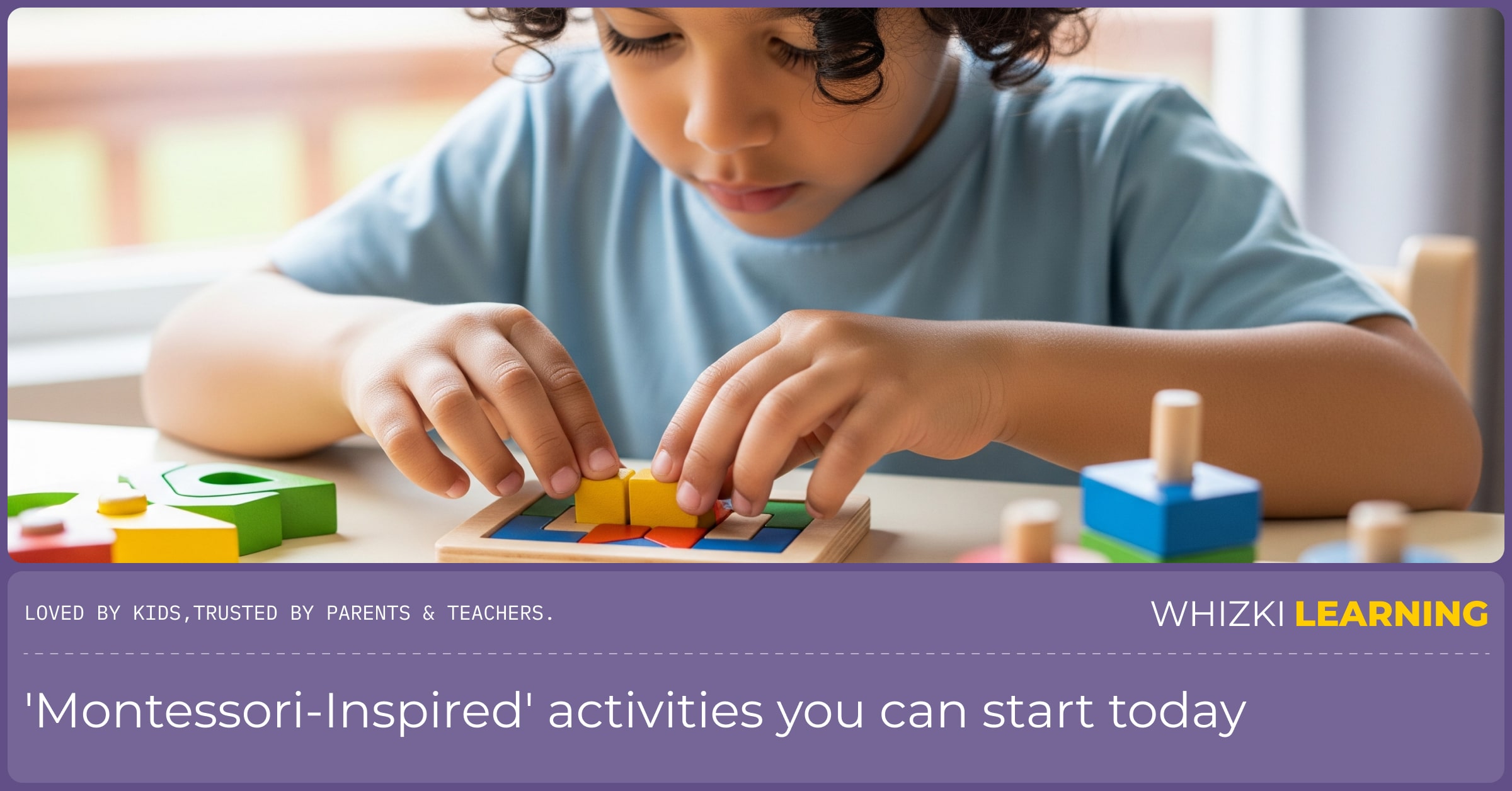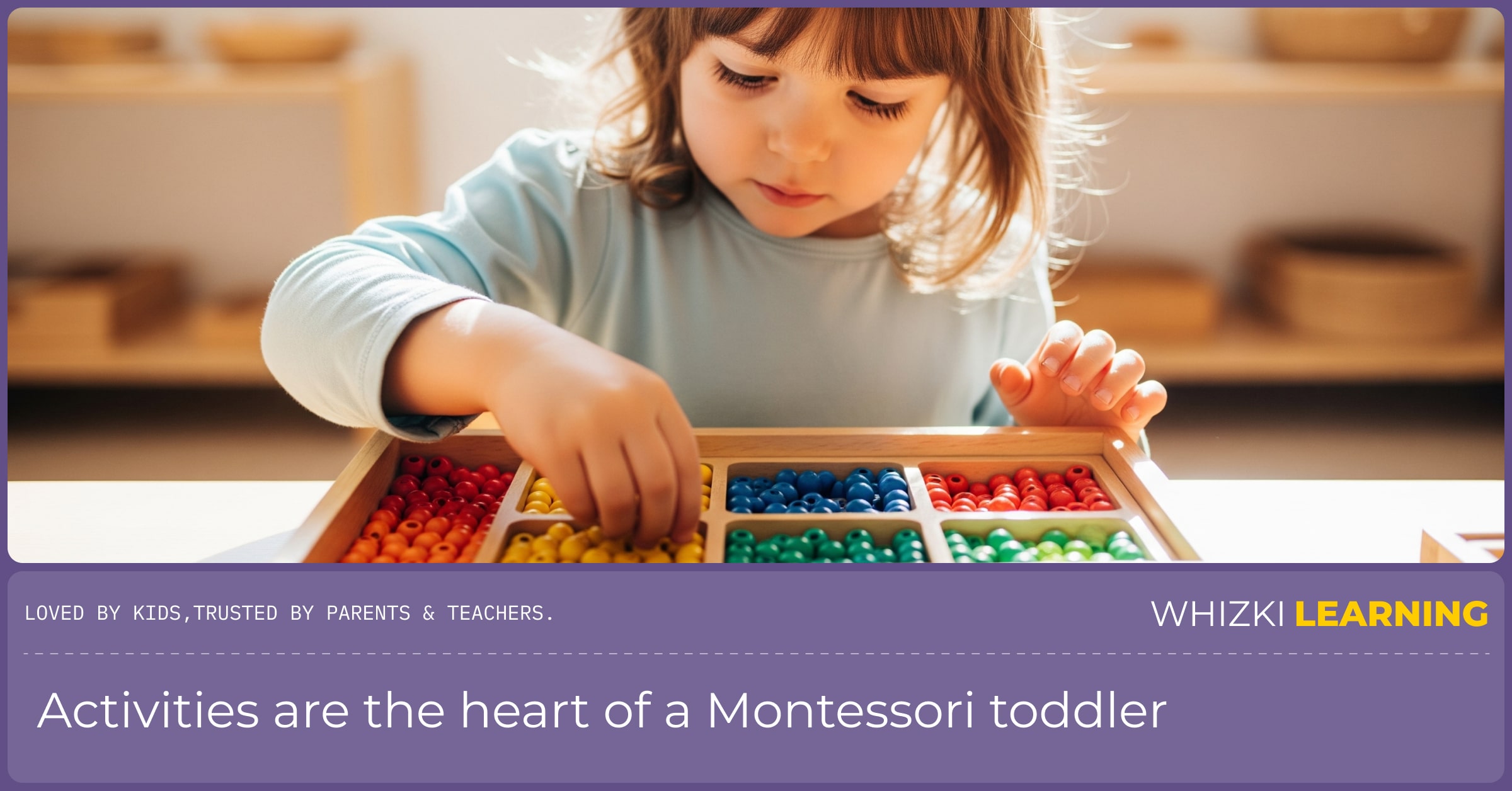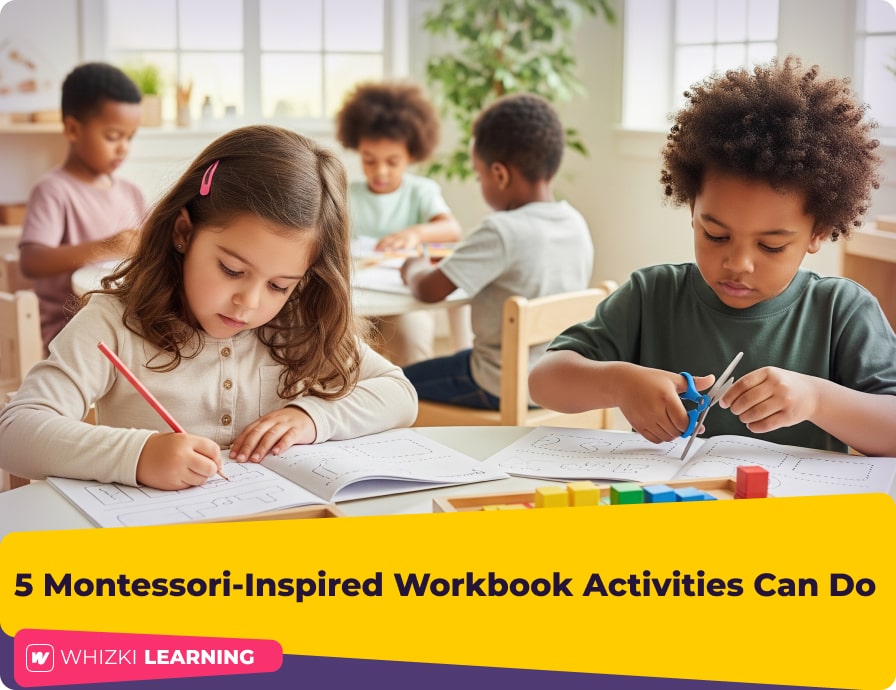Okay, let's have a real talk. You scroll through Instagram or Pinterest, you see it: the flawlessly organized playroom. The beautiful, minimalist wooden toys. The tiny child, calmly pouring water from a miniature pitcher into a tiny glass without spilling a drop. It’s the 'Montessori dream,' and while it's beautiful, it can also whisper something a little discouraging: 'My home will never look like this. I must be doing it wrong.'
Sound familiar? If so, I want you to take a deep, cleansing breath and hear this: You don't need a perfect classroom to give your child the profound benefits of a Montessori education. You really don't. At its heart, Montessori isn’t a brand of toys or a style of interior design. It's a philosophy. It's a way of respecting the child as a capable, curious, and powerful individual. And that spirit? You can bring it into your home right now, with what you already have.
This guide is about bridging that gap between the ideal and the real. We’ll quickly touch on the core principles that matter, and then dive into 5 simple, joyful, 'Montessori-Inspired' activities you can start today. This is your guilt-free guide to practical Montessori.
First, What Is the 'Montessori Spirit,' Anyway?
Before we get to the activities, understanding the 'why' makes the 'what' so much more powerful. When we talk about the Montessori spirit, we're talking about a few core beliefs that Dr. Maria Montessori observed in children over 100 years ago. These ideas are the foundation of everything.

Principle 1: Follow the Child
This is the big one. It means observing your child and trusting that they have an inner guide for their own development. Are they suddenly fascinated by bugs? Great, let's find books about bugs. Are they obsessed with lining up their cars? Fantastic, they're exploring order and sequence. Instead of pushing our own agenda, we watch for their 'sensitive periods'-windows of intense interest in learning a specific skill. It’s about being a guide, not a director.
Principle 2: Hands-On, Purposeful 'Work'
In Montessori, 'work' is a beautiful word. It doesn’t mean chores; it means joyful, engaging activity that a child chooses for themselves. Dr. Montessori called the hand 'the instrument of the mind.' Children learn abstract concepts by first manipulating concrete objects. This hands-on process leads to deep concentration and a profound sense of satisfaction. The goal is the process itself, not just the end result.
Principle 3: The Prepared Environment
This is where people get hung up on the aesthetics, but it's much simpler than that. A 'prepared environment' is simply one that is orderly, accessible, and designed for the child's independence. It means having a low shelf where they can reach their own toys and books. It means keeping art supplies in a specific, predictable spot. It means a small stool so they can reach the sink to wash their hands. It’s about creating a space where they can confidently say, 'I can do it myself.'
Bridging Philosophy and Reality: The 'Montessori-Inspired' Workbook
Now, a purist might say, 'Workbooks aren't Montessori!' And in the strictest sense, they're right. Traditional classrooms use specific, self-correcting wooden materials. But as modern parents, we need practical tools that fit our lives. A well-designed, 'Montessori-Inspired' workbook can be a phenomenal bridge. Here's how:
- It's a prepared environment in a single package. Each activity is ordered, self-contained, and ready to go.
- It provides purposeful, hands-on 'work'-cutting, pasting, tracing, and matching are all tactile activities that build fine motor skills and concentration.
- It allows you to follow the child. You can offer the workbook and see which activities your child gravitates towards, honoring their interests.
- It fosters independence. With clear visual instructions, a child can often work through an activity with minimal help, building confidence.
Our workbooks at Whizki Learning are created with this exact philosophy in mind. They are not meant to replace open-ended play, but to be a powerful, screen-free tool in your parenting toolkit.
5 Montessori-Inspired Activities You Can Do Today
Alright, let's get to the fun part. Here are five activities, using either simple household items or pages from our workbooks.
Activity 1: The 'Practical Life' Sorting Tray
The Big Idea: 'Practical Life' activities are the heart of a Montessori toddler environment. They are simple, real-world tasks that build concentration, order, and fine motor skills. This activity is a perfect introduction.
Montessori Principles at Play: Purposeful Work, Fine Motor Skills, The Prepared Environment.
What You'll Need at Home: A sectioned tray (like an ice cube tray or a muffin tin) and a bowl of mixed 'treasures' like large pom-poms, dry pasta shapes, and big buttons.
How to Do It:
- Sit with your child and present the materials simply. "This is your sorting work."
- Slowly and deliberately, pick up one type of object-say, a pom-pom-and place it in one section of the tray.
- Pick up another pom-pom and place it in the same section.
- Pick up a different object-a piece of pasta-and place it in a *new* section.
- Invite your child to continue the work. "Would you like a turn?" Let them sort the rest of the items by category. The goal isn't perfection; it's the focused effort.
The Workbook Connection: This is a foundational skill for early math! In our Preschool Summer Brain Fun workbook, you’ll find 'Sort by Size' and 'Match the Shadows' pages that use the exact same logic-grouping items based on shared attributes.
Parent-to-Parent Tip: Let them make a mess. Let them mix things up. The 'work' is in the trying. When they are done, show them how to put all the treasures back in the bowl, ready for next time. The cleanup is part of the activity!

Activity 2: The 'Sensory Writing' Sand Tray
The Big Idea: Children learn letters best when they can feel them. Before they ever hold a pencil, they can write with their whole hand, building muscle memory and a tactile understanding of shapes.
Montessori Principles at Play: Hands-On Learning, Follow the Child (pre-writing interest).
What You'll Need at Home: A shallow tray or baking sheet, a thin layer of sand (or salt, or cornmeal), and a few cards with simple lines or letters written on them.
How to Do It:
- Show your child the first card (e.g., a straight line).
- Using your index finger, slowly draw that line in the sand.
- Smooth the sand over and invite your child to try.
- Continue with other shapes-a wavy line, a circle, and eventually the letters in their name.
The Workbook Connection: This is the perfect warm-up for our First Learn to Trace and Write workbook. After exploring the letters in the sand tray, the guided paths in the workbook will feel familiar and much less intimidating. It turns abstract lines on a page into something they've already felt.
Parent-to-Parent Tip: This is not about perfect letter formation. It’s about exploration. If they just want to doodle and swirl their fingers in the sand for ten minutes, that’s a huge win for sensory exploration and focus!
Activity 3: The 'Sound Game' (I Spy)
The Big Idea: Montessori phonics begins with sounds, not letter names. Before a child knows that the letter is called 'B,' they should know that 'ball' starts with the /b/ sound. This game isolates sounds in a fun, playful way.
Montessori Principles at Play: Language Development, Follow the Child.
What You'll Need at Home: Just you, your child, and a few objects around the room.
How to Do It:
- Start simply. Say, "I spy with my little eye, something that starts with the sound /m/."
- Look expectantly at a few objects, one of which starts with that sound (e.g., milk, mat, mom).
- When they guess it, celebrate! "Yes! /m/, /m/, milk!"
- Let them take a turn spying something for you.
The Workbook Connection: This oral game is the ideal preparation for phonics pages. In our Kindergarten Skill Builder workbook, we have activities like 'Circle the pictures that start with the /t/ sound.' A child who has played the sound game will understand the task instantly.
Parent-to-Parent Tip: Use the phonetic sound, not the letter name (e.g., say /b/ as in 'buh,' not 'bee'). This is a game-changer for learning to read later on.
Activity 4: The 'Number Rod' Nature Walk
The Big Idea: Montessori math materials, like the iconic number rods, teach that numbers represent a physical quantity. We can replicate this concept easily using things we find outside.
Montessori Principles at Play: Hands-On Learning, Concrete to Abstract.
What You'll Need at Home: A walk outside and a collection of 10 sticks of varying lengths.
How to Do It:
- On your walk, collect sticks.
- Back home, lay them out. Find the shortest stick. "This is one."
- Find a stick that is a little longer. "This is two." Continue this up to 10, creating a sequence of increasing lengths.
- You can then play games. "Can you find the 'three' stick?" or "Which one is longer, 'four' or 'five'?" They are learning quantity and comparison physically.
The Workbook Connection: Pages that ask a child to 'Circle the group with more' or 'Draw a line from the number to the correct number of objects' directly reinforce this concept. Our 1st Grade Workbooks build on this by introducing simple addition, which is just combining these concrete quantities.
Parent-to-Parent Tip: Let your child lead the collection. Maybe they want to collect rocks or leaves instead of sticks. Perfect! The principle is the same. Ten small rocks is 'ten.' One big rock is 'one.'
Activity 5: The 'Care of the Environment' Art Station
The Big Idea: A core part of the Montessori curriculum is 'Care of Self' and 'Care of the Environment.' This means learning to be responsible for one's own body and workspace. An art project is a perfect opportunity to practice this.
Montessori Principles at Play: The Prepared Environment, Independence, Purposeful Work.
What You'll Need at Home: A specific place for art supplies. A tray to work on. A small sponge and a small cloth for cleanup.
How to Do It:
- Define the art space. "We do our painting at this little table."
- Show them how to get their materials: take the paper, get the paint, put it on the tray.
- After the art is done, the 'work' continues. Show them, step-by-step, how to wash the brush, wipe the table with the sponge, and put everything back where it belongs.
- The cleanup isn't a chore; it's a respected part of the process.
The Workbook Connection: A workbook is the ultimate 'prepared environment' for a creative task. It's clean, organized, and portable. When you present a page from one of our creative learning workbooks, you are giving your child a perfectly contained workspace. Teaching them to put the cap back on their marker and put the workbook back on the shelf is a beautiful, simple 'Care of the Environment' task.
Living the Montessori Spirit, Every Day
See? No pristine white shelves required. The Montessori spirit is about seeing your child as a capable, wondrous being and preparing their world to allow them to flourish. It’s about finding joy in the simple, purposeful 'work' of sorting pasta, drawing in sand, or simply putting away their own crayons.
It’s a mindset of respect and trust. And for those days when you're busy, tired, or just need a simple, ready-to-go activity, a tool like a Whizki workbook can be your best friend-a little bit of prepared, purposeful, screen-free magic, right at your fingertips. You're doing a great job.






